The Nature
Observer’s Journal
The Nature
Observer’s Journal

Hunting the Big Cats
Chuck Tague
Part 1: Hickory Horned Devils
September is the month to hunt big cats in western Pennsylvania, home of some of the biggest, most ferociously ugly cats. No, I don’t shoot Bobcats, Lynx or Mountain Lions. I photograph insects. Cats, short for caterpillar, are the larval form of moths and butterflies. If you know where to search you can find caterpillars in any season, but during the transition from summer to fall the big cats are on the prowl.
On September 2, 2005 I ran into one such beast in western Pennsylvania. By chance, I pulled down a Staghorn Sumac branch to look at some sumac stem galls but I forgot about them when I looked eye to eye with a huge orange cat, a cat with menacing branched spines.
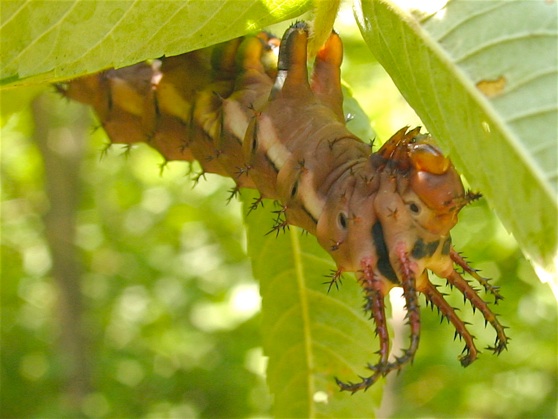
I recognized it immediately as a Hickory Horned Devil but from my experience it was the wrong color and a bit small. My two previous encounters were with much larger blue-green caterpillars and they were on the ground. I measured the mini-monster. It was only 3.5 inches long and .75 inches in diameter.
When I say the horned devil was ugly I don’t mean to be negative nor judgmental. I admire menacing ugliness as a survival strategy. I picture my Irish ancestors as tattooed, grizzled barbarians that screamed like banshees as they boarded passing ships or charged Viking invaders. Gruesomely hideous warriors are not unique to the Celtic and Norse pagans. In the context of ugliness as a survival strategy, the horned devil is a thing of beauty.
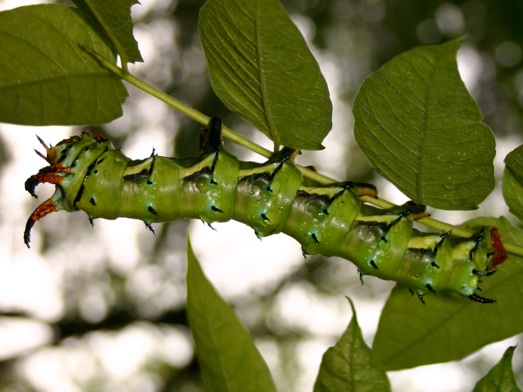
I checked Caterpillars of Eastern Forests, (Wagner et al, USDA Forest Service, 1997). Hickory Horned Devil, or Regal Moth, Clitheronia regalis, was a perfect match. It listed sumac as a larval food plant, along with walnuts, hickories and Sweet Gum.
On BugGuide.net I found a photo essay of the horned devil's life cycle. Although the markings and spiny accessories stay the same, the caterpillar changes color each time it sheds its skin. The stage between each molt is called an “instar”. BugGuide's photo of the three-week old caterpillar had the same coloration as the one I observed. With luck, the leaf-munching beast will go through two or three more molts. When it goes underground to pupate it will be 5.5 inches long, the largest caterpillar in the eastern forest.
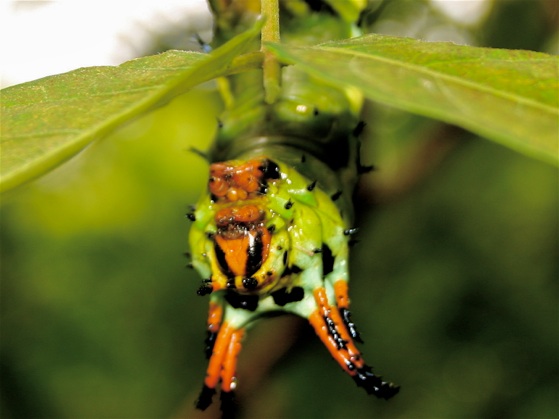
Hickory Horned Devils are in the Silkmoth family, Saturniidae. This family includes our largest and most familiar moths: the Luna, Cecropia, Polyphemus and Prometheus Moths as well as some smaller moths like the Rosy Maple and Io Moths. In this family of behemoths, the horned devil is by far the largest.
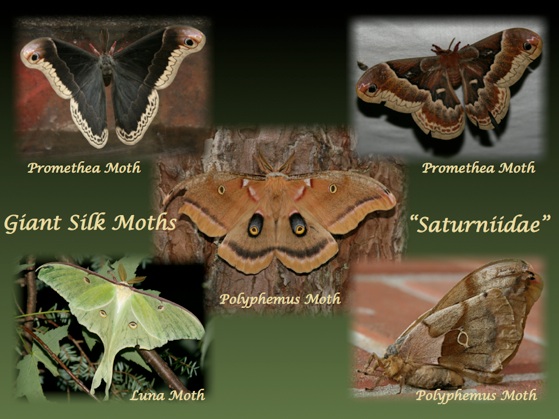
When the caterpillar reaches its full growth, it will burrow underground and form a pupa in an underground cell. Horned Devils do not make a cocoon. The next year, or possibly after two years, it will emerge as a huge, red and yellow moth, known as the Royal Walnut Moth. Hickory Horned Devils are found in deciduous forests from New York to Florida. Look for them on hickory and walnut trees as well as ash, Sweet Gum, persimmons, sycamores and sumac. However, for huge colorful animals they blend in quite well. People mostly encounter horned devils on the ground as they wander in search of a suitable place to burrow underground and form a cocoon.
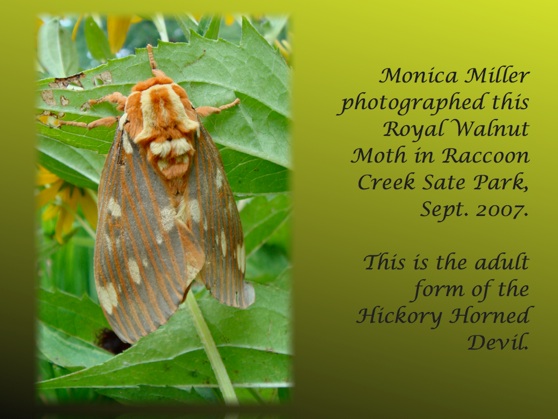
Part 2: A Magnificent Beast that Only Gets Better
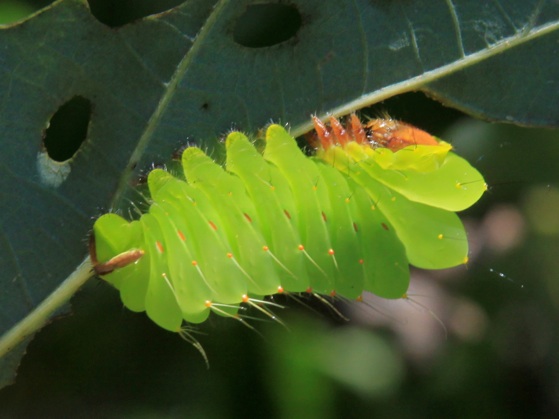
On September 2, 2009 I spotted this incredible creature chomping on a White Oak leaf in Raccoon Creek State Park, Beaver County, Pennsylvania. It was about two inches long and 3/4 inch thick, a neon cat with long jaws that devastate leaves. It’s the larva of the Polypemus Moth, Antheraea polyphemus, one of the Giant Silkworm Moths in the family Saturniidae. If it was not eaten by a predator or parasitized by a wasp, it grew another inch then pupated and dropped into the leaf litter where it spent the winter.
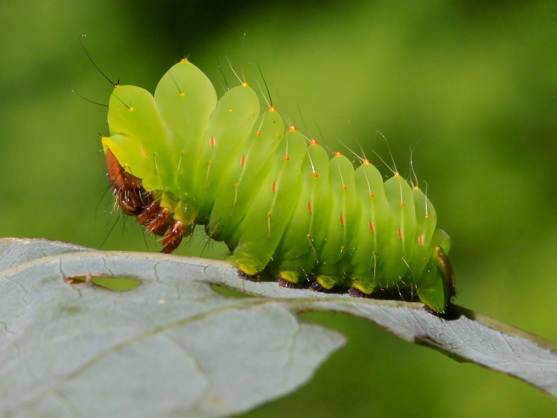
The following June it broke out of its cocoon and transformed into one of the largest and most colorful moths in eastern North America.
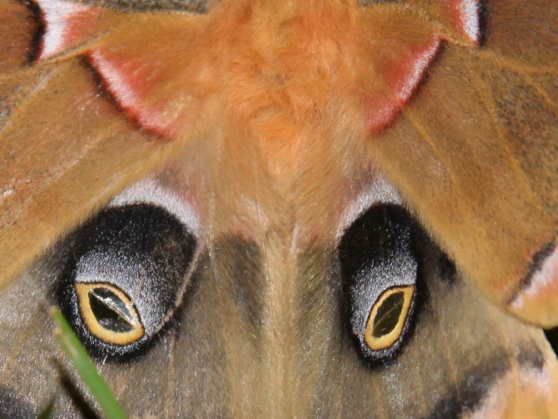
Polyphemus moths live in hardwood forests across they United States and southern Canada. They have one “eye” on each wing. They flash the larger eyes on the hindwings whenever they are threatened. Polyphemus Moths are named for the Cyclops Polyphemus, the scourge of Odysseus and his men.
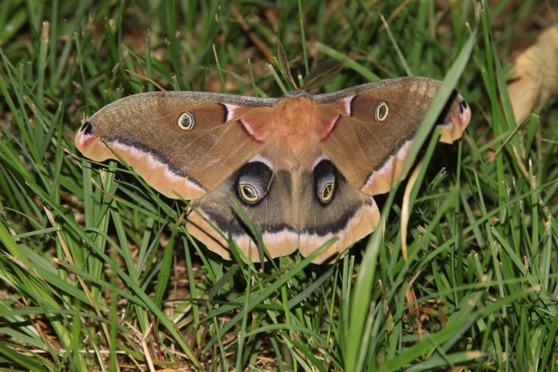
Polyphemus female
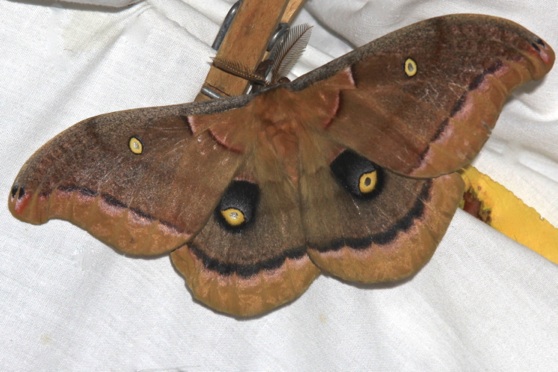
Polyphemus male
Wednesday, September 5, 2012
